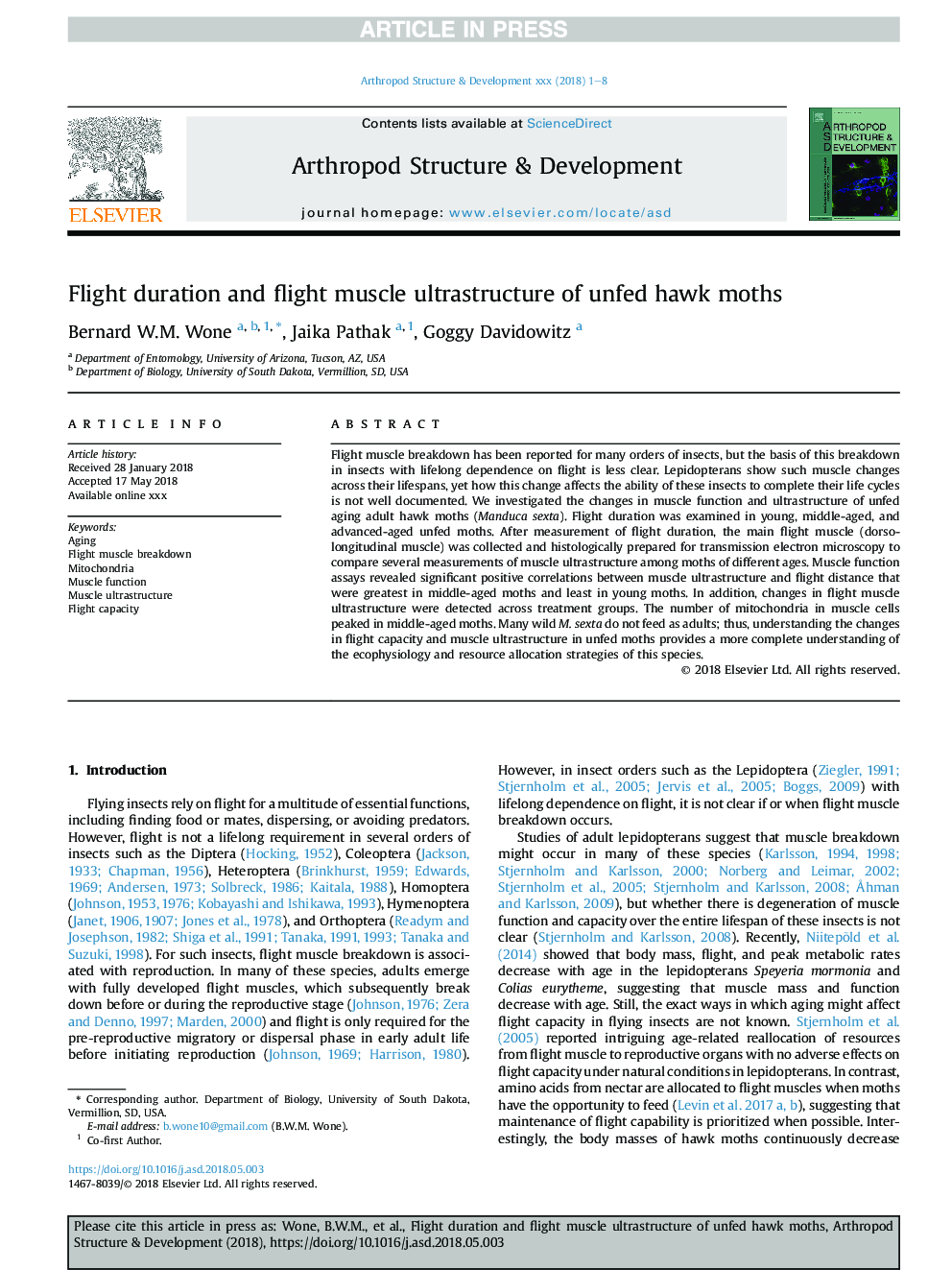| Article ID | Journal | Published Year | Pages | File Type |
|---|---|---|---|---|
| 10212217 | Arthropod Structure & Development | 2018 | 8 Pages |
Abstract
Flight muscle breakdown has been reported for many orders of insects, but the basis of this breakdown in insects with lifelong dependence on flight is less clear. Lepidopterans show such muscle changes across their lifespans, yet how this change affects the ability of these insects to complete their life cycles is not well documented. We investigated the changes in muscle function and ultrastructure of unfed aging adult hawk moths (Manduca sexta). Flight duration was examined in young, middle-aged, and advanced-aged unfed moths. After measurement of flight duration, the main flight muscle (dorsolongitudinal muscle) was collected and histologically prepared for transmission electron microscopy to compare several measurements of muscle ultrastructure among moths of different ages. Muscle function assays revealed significant positive correlations between muscle ultrastructure and flight distance that were greatest in middle-aged moths and least in young moths. In addition, changes in flight muscle ultrastructure were detected across treatment groups. The number of mitochondria in muscle cells peaked in middle-aged moths. Many wild M. sexta do not feed as adults; thus, understanding the changes in flight capacity and muscle ultrastructure in unfed moths provides a more complete understanding of the ecophysiology and resource allocation strategies of this species.
Related Topics
Life Sciences
Agricultural and Biological Sciences
Insect Science
Authors
Bernard W.M. Wone, Jaika Pathak, Goggy Davidowitz,
